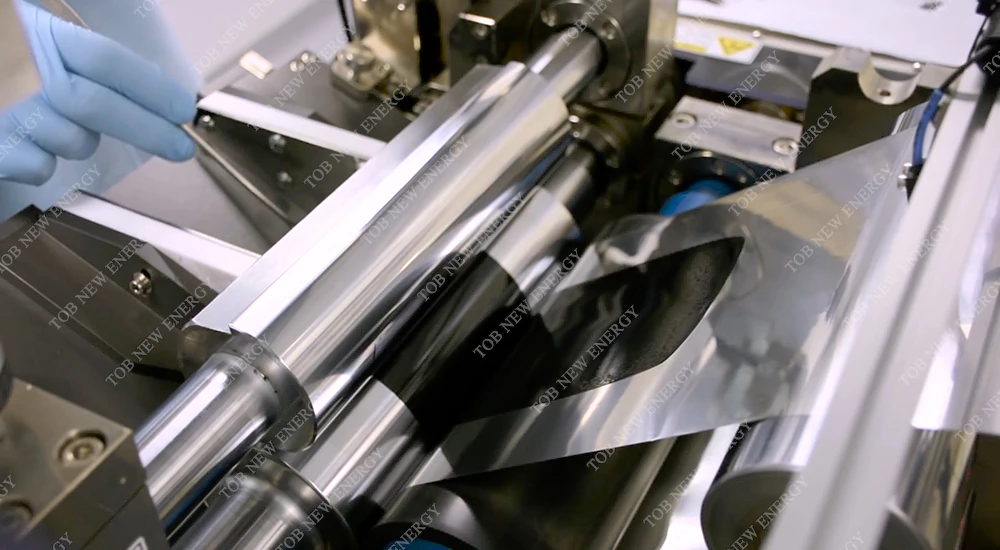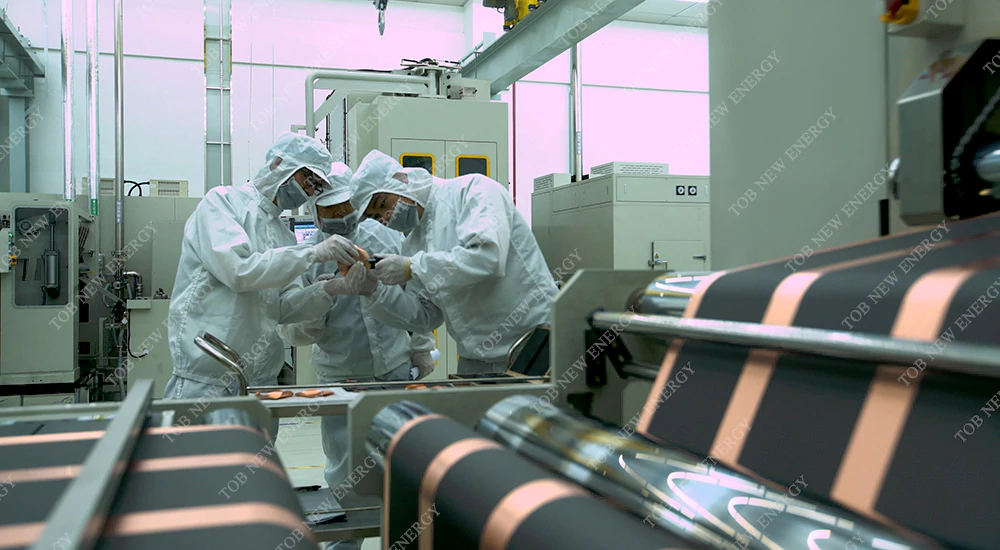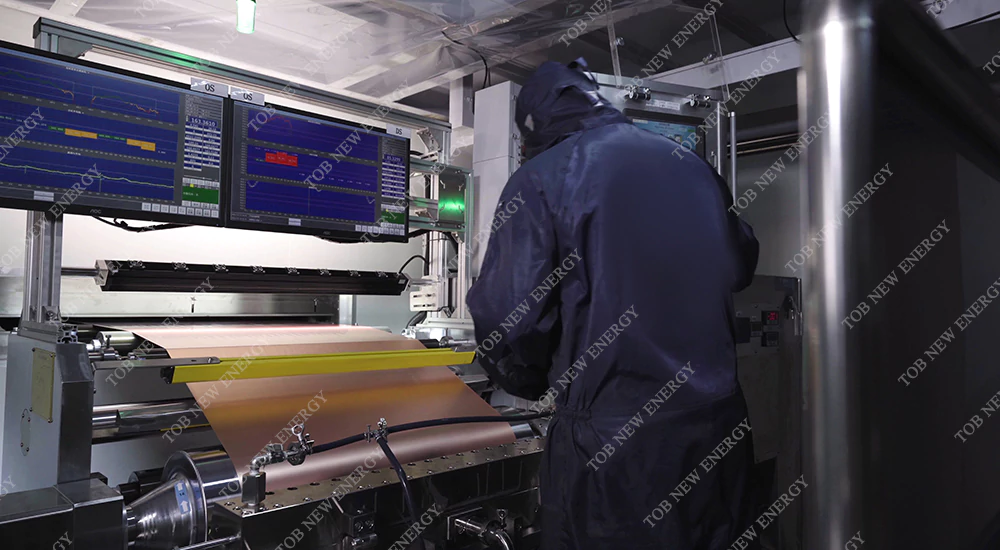As a key equipment in battery production, the calibration accuracy of the coating head of the lithium battery coating machine directly affects the coating quality, and thus affects the performance and life of the battery. This article will analyze the calibration method of the lithium battery coating machine die head in detail from three levels: basic calibration, positioning calibration, and fine calibration, combined with specific data.

Basic Calibration
Basic calibration is an important step before starting the coater. It aims to ensure the normal operation of the coater by adjusting the coater's speed, pressure, flow and other parameters, and to preliminarily determine possible problems.
Steps and data
Install the die head: Place the coating head on the coating machine and ensure it is firmly installed.
Setting parameters:
1. Speed: Set the coating speed to 5m/min (the specific speed is adjusted according to product requirements).
2. Pressure: Adjust the die pressure to 1.5MPa (the pressure range is determined by the slurry viscosity and the coating head design).
3. Flow rate: Set the slurry flow rate to 10L/min (the flow rate is adjusted according to the coating width and coating thickness requirements).
4. Observe the coating effect: Start the coating machine and observe the coating effect to ensure that the coating is uniform, without missing coating and scratches.
Data Analysis
During the basic calibration process, the operating status of the coater can be preliminarily determined by real-time monitoring of coating width, coating thickness, coating uniformity and other data. For example, if the coating width deviation exceeds ±1mm, or the coating thickness fluctuation exceeds±5%, further adjustments are required.

Positioning Calibration
Positioning calibration is carried out after basic calibration is completed, aiming to ensure uniform coating effect by accurately installing the die head and adjusting coating parameters.
Steps and data
Precisely install the coating head: Use precision instruments (such as laser positioning instruments) to accurately install the coating head on the coating machine, ensuring that the parallelism between the coating head and the coating surface is within 0.05mm.
Adjustment parameters:
1. Speed fine-tuning: According to the coating effect, fine-tune the speed to 4.8m/min.
2. Pressure fine-tuning: Adjust the coating head pressure to 1.48MPa to optimize the coating uniformity.
3. Observe the coating effect: Start the coating machine again, observe the coating effect, and ensure that the coating is uniform and defect-free.
Data Analysis
During the positioning calibration process, the coating uniformity can be further improved by fine-tuning parameters such as speed and pressure. For example, after positioning calibration, the coating width deviation can be controlled within ±0.5mm, and the coating thickness fluctuation can be controlled within±3%.

Fine calibration
Fine calibration is the last and most complex step in the calibration process. It requires the use of specialized test tools and equipment to make precise adjustments to the coater's specifications and requirements.
Steps and data
1. Use professional testing tools: Use tools such as high-precision flow meters, pressure sensors, and coating thickness gauges for fine measurements.
2. Adjust die structure: Fine-tune structural parameters such as the slit width and gasket thickness of the coating head based on the measurement data. For example, adjust the slit width from 0.2mm to 0.18mm to improve coating uniformity.
3. Optimize coating parameters: Further optimize the coating effect by adjusting parameters such as slurry flow, pressure, and speed. For example, fine-tune the slurry flow to 9.8L/min and the pressure to 1.47MPa.
4. Verify the coating effect: After the adjustment is completed, conduct multiple coating tests to verify the stability and consistency of the coating effect.
Data analysis
During the fine calibration process, the coating head structure and coating parameters are precisely adjusted to significantly improve the stability and consistency of coating quality. For example, after fine calibration, the uniformity of coating thickness can be improved to within ±1%, and the deviation of coating width can be controlled within±0.1mm.
Conclusion
The calibration of the coating head of the lithium battery coating machine is a complex and delicate process, which requires the operator to have rich experience and professional knowledge. Through the gradual implementation and precise adjustment of the three steps of basic calibration, positioning calibration and fine calibration, the coating machine can be ensured to reach the best operating state, thereby producing high-quality and high-performance lithium battery products. In actual operation, the calibration method and parameter settings should be flexibly adjusted in combination with specific product requirements and equipment conditions.